 Search by Keyword
|
"ROCKY RACCOON"
(John Lennon – Paul McCartney)
After the serious tone of the "Sgt. Pepper" album, as well as most of their remaining 1967 output, The Beatles found themselves exhibiting a much more playful attitude. Yes indeed, tensions were very high during the "White Album" sessions as history shows, but when it came to subject matter, many of the songs it contained were less serious than its predecessor.
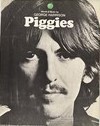 Humor, of course, can be found strewn throughout The Beatles compositions here and there. But, most generally, the “White Album” shows all four composers dabbling with eccentric topics and musical arrangements that are intended to put a smile (or at least a smirk) on the listener's face. John displays it in “Bungalow Bill” and “Happiness Is A Warm Gun,” Ringo in “Don't Pass Me By,” and even the ultra serious George injects some fun with “Piggies” and “Savoy Truffle.” Not one to be outdone, of course, is Paul, whose compositions therein include “Back In The USSR,” “Why Don't We Do It In The Road” and, most noteworthy, “Rocky Raccoon.” Viewed by some as an embarrassing throwaway just after its release, it has stood the test of time and has become a quirky standard that maintains its popularity as the years roll on. Humor, of course, can be found strewn throughout The Beatles compositions here and there. But, most generally, the “White Album” shows all four composers dabbling with eccentric topics and musical arrangements that are intended to put a smile (or at least a smirk) on the listener's face. John displays it in “Bungalow Bill” and “Happiness Is A Warm Gun,” Ringo in “Don't Pass Me By,” and even the ultra serious George injects some fun with “Piggies” and “Savoy Truffle.” Not one to be outdone, of course, is Paul, whose compositions therein include “Back In The USSR,” “Why Don't We Do It In The Road” and, most noteworthy, “Rocky Raccoon.” Viewed by some as an embarrassing throwaway just after its release, it has stood the test of time and has become a quirky standard that maintains its popularity as the years roll on.
Songwriting History
The song took shape while The Beatles were on retreat in Rishikesh, India in the spring of 1968 studying Transcendental Meditation with the Maharishi. "I was sitting on the (ashram) roof in India with a guitar," Paul explained in 1968. "John and I were sitting 'round playing guitar, and we were with Donovan (Leitch). And we were just sitting around enjoying ourselves, and I started playing the chords of 'Rocky Raccoon,' you know, just messing around. And, oh, originally it was 'Rocky Sassoon,' and we just started making up the words, you know, the three of us - and started just to write them down. They came very quickly. And eventually I changed it from Sassoon to Raccoon, because it sounded more like a cowboy. So there it is."
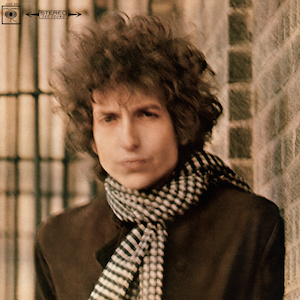 In his 2021 book "The Lyrics," Paul recalls: "When you're sitting around with an acoustic guitar, often the natural thing to do is to get a bit folky. I was doing a bit of a spoof on records I'd heard, kind of talking blues songs. Bob Dylan was doing that kind of thing...I just started imagining this little story, and for me it's like going on a train ride or something - a train ride of the mind. And because I was doing it sort of tongue-in-cheek, it was quite pleasant to write and sing." In his 2021 book "The Lyrics," Paul recalls: "When you're sitting around with an acoustic guitar, often the natural thing to do is to get a bit folky. I was doing a bit of a spoof on records I'd heard, kind of talking blues songs. Bob Dylan was doing that kind of thing...I just started imagining this little story, and for me it's like going on a train ride or something - a train ride of the mind. And because I was doing it sort of tongue-in-cheek, it was quite pleasant to write and sing."
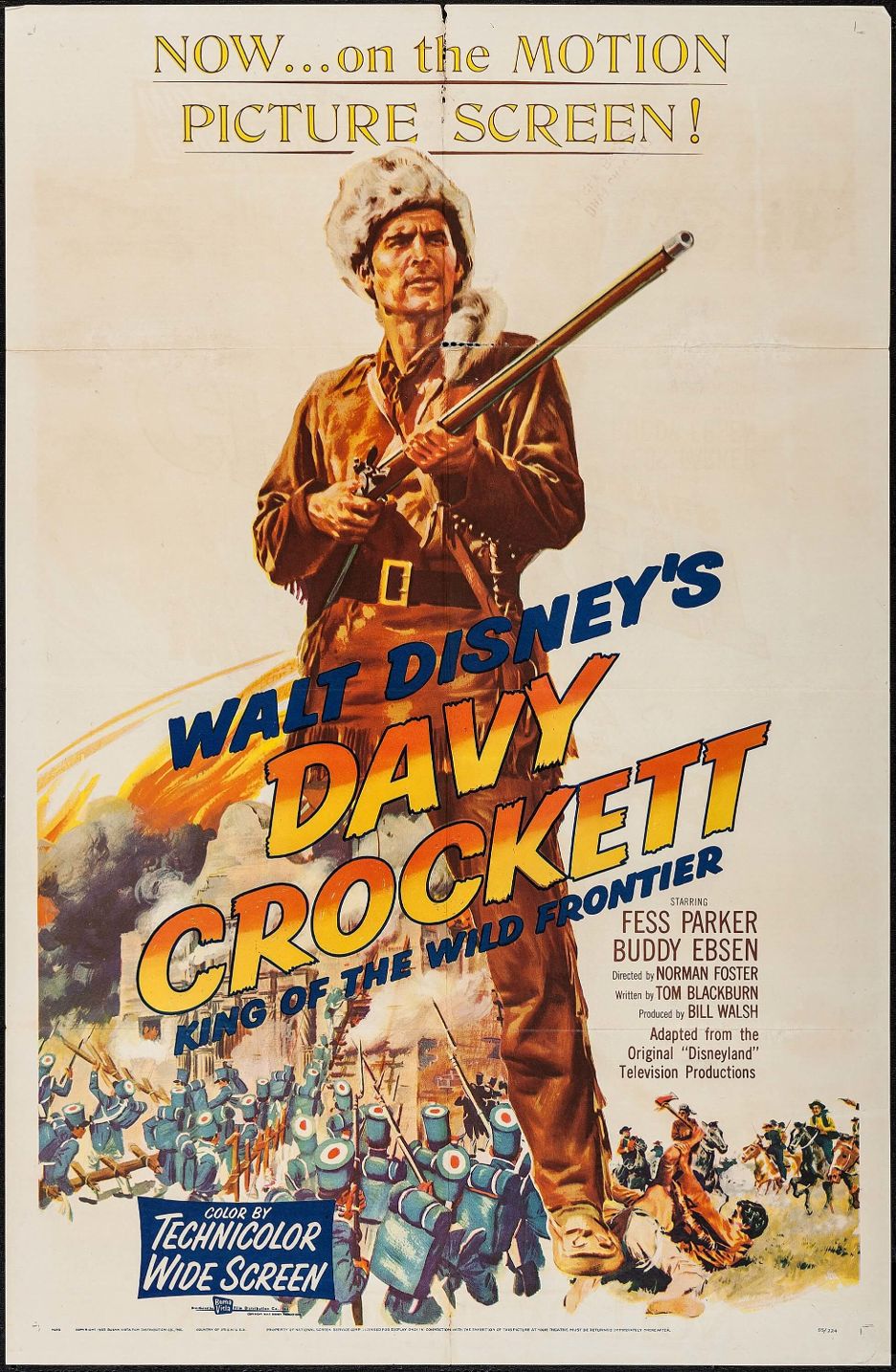 As for the main character's name, it has been rumored that “Rocky” was inspired by Roky Ericson, lead vocalist of the '60s psychedelic band “The 13th Floor Elevators.” The original last name “Sassoon” was said to have either been inspired by war poet Siegfried Sassoon or famous hairdresser Vidal Sassoon. In his book "The Lyrics," Paul explains otherwise. "So, we were doing this rap, and I just dreamt up a character called 'Rocky Raccoon,' because of Davy Crockett and his raccoon cap. I'd watched 'Davy Crockett' on telly, starring Fess Parker, when I was a kid. I saw the TV show, but my main thing was the song: 'Davy Crocket, King of the Wild Frontier.' It was quite a cool song." As for the main character's name, it has been rumored that “Rocky” was inspired by Roky Ericson, lead vocalist of the '60s psychedelic band “The 13th Floor Elevators.” The original last name “Sassoon” was said to have either been inspired by war poet Siegfried Sassoon or famous hairdresser Vidal Sassoon. In his book "The Lyrics," Paul explains otherwise. "So, we were doing this rap, and I just dreamt up a character called 'Rocky Raccoon,' because of Davy Crockett and his raccoon cap. I'd watched 'Davy Crockett' on telly, starring Fess Parker, when I was a kid. I saw the TV show, but my main thing was the song: 'Davy Crocket, King of the Wild Frontier.' It was quite a cool song."
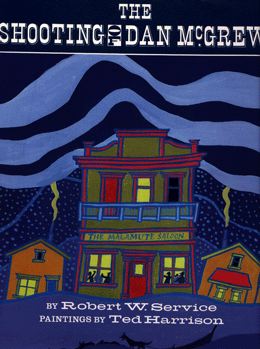 Paul once described "Rocky Raccoon" as “a Mack Sennett movie set to music.” Mack Sennett was an innovator of slapstick comedy, famously dubbed the “King Of Comedy,” and has an extensive filmography that stretches from 1908 to 1914. In his book "The Lyrics," Paul adds: "There were poems that people - a drunken uncle perhamps? - would recite at parties, like Robert Service's 'The Shooting Of Dan McGrew." There are some striking similarities found in the narrative of this famous poem from 1907, such as a love triangle, a gunfight, a male character named “Dan,” and the female character's name who is repeatedly referred to as “the lady that's known as Lou” (as apposed to “she called herself 'Lil' but everyone knew her as 'Nancy'”). Another famous poem Paul cites in his book "The Lyrics" as possible inspiration is "Marriott Edgar's 'The Lion And Albert,' made famous by Stanley Holloway's stage recitation, in which the lion eats Albert and the parents complain to the zookeeper. It's that kind of black humor." Paul once described "Rocky Raccoon" as “a Mack Sennett movie set to music.” Mack Sennett was an innovator of slapstick comedy, famously dubbed the “King Of Comedy,” and has an extensive filmography that stretches from 1908 to 1914. In his book "The Lyrics," Paul adds: "There were poems that people - a drunken uncle perhamps? - would recite at parties, like Robert Service's 'The Shooting Of Dan McGrew." There are some striking similarities found in the narrative of this famous poem from 1907, such as a love triangle, a gunfight, a male character named “Dan,” and the female character's name who is repeatedly referred to as “the lady that's known as Lou” (as apposed to “she called herself 'Lil' but everyone knew her as 'Nancy'”). Another famous poem Paul cites in his book "The Lyrics" as possible inspiration is "Marriott Edgar's 'The Lion And Albert,' made famous by Stanley Holloway's stage recitation, in which the lion eats Albert and the parents complain to the zookeeper. It's that kind of black humor."
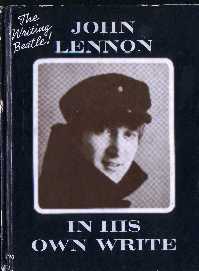 Paul, however, claims it all just came to him in the moment. “These kind of things – you can't really talk about how they come 'cause they just come into your head, you know. They really do! And it's like John writing his books. There's no...I don't know how he does it, and he doesn't know how he does it, but he just writes. I think people who actually do create and write...you tend to think, 'Oh, how did he do that,' but it actually does flow...just flows from into their head, into their hand, and they write it down, you know. And that's what happened with this. I don't know anything about the Appalachian mountains or cowboys and Indians or anything. But I just made it up, you know...So, there you are.” Paul, however, claims it all just came to him in the moment. “These kind of things – you can't really talk about how they come 'cause they just come into your head, you know. They really do! And it's like John writing his books. There's no...I don't know how he does it, and he doesn't know how he does it, but he just writes. I think people who actually do create and write...you tend to think, 'Oh, how did he do that,' but it actually does flow...just flows from into their head, into their hand, and they write it down, you know. And that's what happened with this. I don't know anything about the Appalachian mountains or cowboys and Indians or anything. But I just made it up, you know...So, there you are.”
 In Paul's book “Many Years From Now,” he goes into more detail about the writing of the song: “'Rocky Raccoon' is quirky, very me. I like talking-blues so I started off like that, then I did my tongue-in-cheek parody of a western and threw in some amusing lines. I just tried to keep it amusing, really; it's me writing a play, a little one-act play giving them most of the dialogue. 'Rocky Raccoon' is the main character, then there's the girl whose real name was 'Magill,' who 'called herself Lil, but she was known 'as Nancy.'” In Paul's book “Many Years From Now,” he goes into more detail about the writing of the song: “'Rocky Raccoon' is quirky, very me. I like talking-blues so I started off like that, then I did my tongue-in-cheek parody of a western and threw in some amusing lines. I just tried to keep it amusing, really; it's me writing a play, a little one-act play giving them most of the dialogue. 'Rocky Raccoon' is the main character, then there's the girl whose real name was 'Magill,' who 'called herself Lil, but she was known 'as Nancy.'”
 He continues: "There are some names I use to amuse, 'Vera, Chuck and Dave' or 'Nancy' and 'Lil,' and there are some I mean to be serious, like "Eleanor Ribgy," which are a little harder because they have to not be joke names. In this case 'Rocky Raccoon' is some bloke in a raccoon hat, like Davy Crockett. The bit I liked about it was him finding Gideon's Bible and thinking, 'Some guy called Gideon must have left it for the next guy.' I like the idea of Gideon being a character. You get the meaning and at the same time get in a poke at it. All in good fun...I'm not sure if I took my tape recorder, we often didn't, we often worked on songs as if they were poems and carried them in our heads. Which is actually the best way because you can revise them at any time." Regarding Gideon's Bible, Paul relates in his book "The Lyrics": "Well, those were in every hotel in America. Probably still are. We'd never seen that in England. So I just thought about that image - checking into a room, looking in the desk, opening the drawer and there's a Bible." He continues: "There are some names I use to amuse, 'Vera, Chuck and Dave' or 'Nancy' and 'Lil,' and there are some I mean to be serious, like "Eleanor Ribgy," which are a little harder because they have to not be joke names. In this case 'Rocky Raccoon' is some bloke in a raccoon hat, like Davy Crockett. The bit I liked about it was him finding Gideon's Bible and thinking, 'Some guy called Gideon must have left it for the next guy.' I like the idea of Gideon being a character. You get the meaning and at the same time get in a poke at it. All in good fun...I'm not sure if I took my tape recorder, we often didn't, we often worked on songs as if they were poems and carried them in our heads. Which is actually the best way because you can revise them at any time." Regarding Gideon's Bible, Paul relates in his book "The Lyrics": "Well, those were in every hotel in America. Probably still are. We'd never seen that in England. So I just thought about that image - checking into a room, looking in the desk, opening the drawer and there's a Bible."
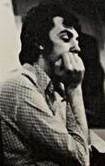 And revise he did, as evidenced by the lyrical differences found between the original May demo (which didn't include any involvement with a doctor), an early take of the song on the day it was officially recorded (which has Rocky coming from “a little town in Minnesota”) to the released version (which has Rocky originating “somewhere in the black mountain hills of Dakota”). In fact, the main story was completely written from early on, but the introduction and the section of the verse containing the doctor seemed to change to whatever popped into his mind at the time. And revise he did, as evidenced by the lyrical differences found between the original May demo (which didn't include any involvement with a doctor), an early take of the song on the day it was officially recorded (which has Rocky coming from “a little town in Minnesota”) to the released version (which has Rocky originating “somewhere in the black mountain hills of Dakota”). In fact, the main story was completely written from early on, but the introduction and the section of the verse containing the doctor seemed to change to whatever popped into his mind at the time.
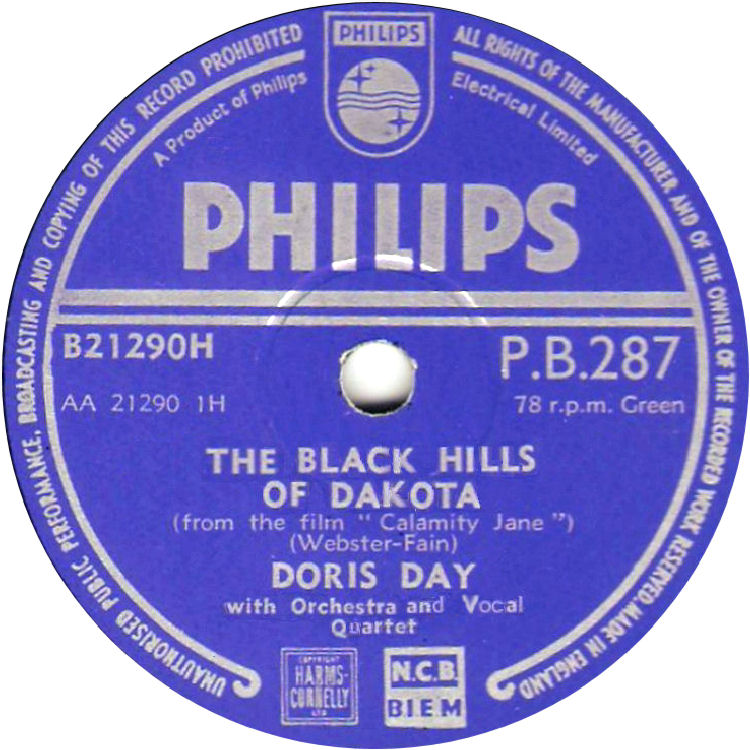 The book contained in the 50th Anniversary "White Album" box set claims that his adlib introduction to the song "was Paul's affectionate imtation of Lonnie Donegan's preamble to his first skiffle hit in 1955, in which he announced, 'Now, this here's the story about the Rock Island Line...'" In his book "The Lyrics," Paul adds, "I knew of an old song, 'The Black Hills of Dakota,' which begins, 'Take me back to the black hills / The black hills of Dakota.' That was Doris Day in 'Calamity Jane.'" This song, which was written by Sammy Fain and Paul Francis Webster in 1953 for the musical film "Calamity Jane," was recorded by Doris Day and reached #7 in the UK charts in 1954. The book contained in the 50th Anniversary "White Album" box set claims that his adlib introduction to the song "was Paul's affectionate imtation of Lonnie Donegan's preamble to his first skiffle hit in 1955, in which he announced, 'Now, this here's the story about the Rock Island Line...'" In his book "The Lyrics," Paul adds, "I knew of an old song, 'The Black Hills of Dakota,' which begins, 'Take me back to the black hills / The black hills of Dakota.' That was Doris Day in 'Calamity Jane.'" This song, which was written by Sammy Fain and Paul Francis Webster in 1953 for the musical film "Calamity Jane," was recorded by Doris Day and reached #7 in the UK charts in 1954.
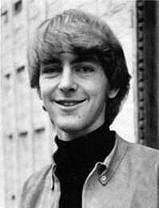 Regarding his adlib verse containing the doctor, Paul's voice saying, “I don't quite know the words to that verse yet!” was caught on tape during the actual recording of the song. He did, however, go into great detail about where this inspiration came from in his book "The Lyrics." Recounting an event from December 26th, 1965, Paul writes: "I did once have an accident in Liverpool where I fell off a moped and busted my lip open, and we had to get the doctor round to my cousin Betty's house. That was around this same time, when I was twenty something and going out on the moped from my dad's house to Betty's house. I was taking a friend, Tara (Browne) Guinness...(Betty) said, 'Get a doctor, get a doctor. It needs stitches.'" Regarding his adlib verse containing the doctor, Paul's voice saying, “I don't quite know the words to that verse yet!” was caught on tape during the actual recording of the song. He did, however, go into great detail about where this inspiration came from in his book "The Lyrics." Recounting an event from December 26th, 1965, Paul writes: "I did once have an accident in Liverpool where I fell off a moped and busted my lip open, and we had to get the doctor round to my cousin Betty's house. That was around this same time, when I was twenty something and going out on the moped from my dad's house to Betty's house. I was taking a friend, Tara (Browne) Guinness...(Betty) said, 'Get a doctor, get a doctor. It needs stitches.'"
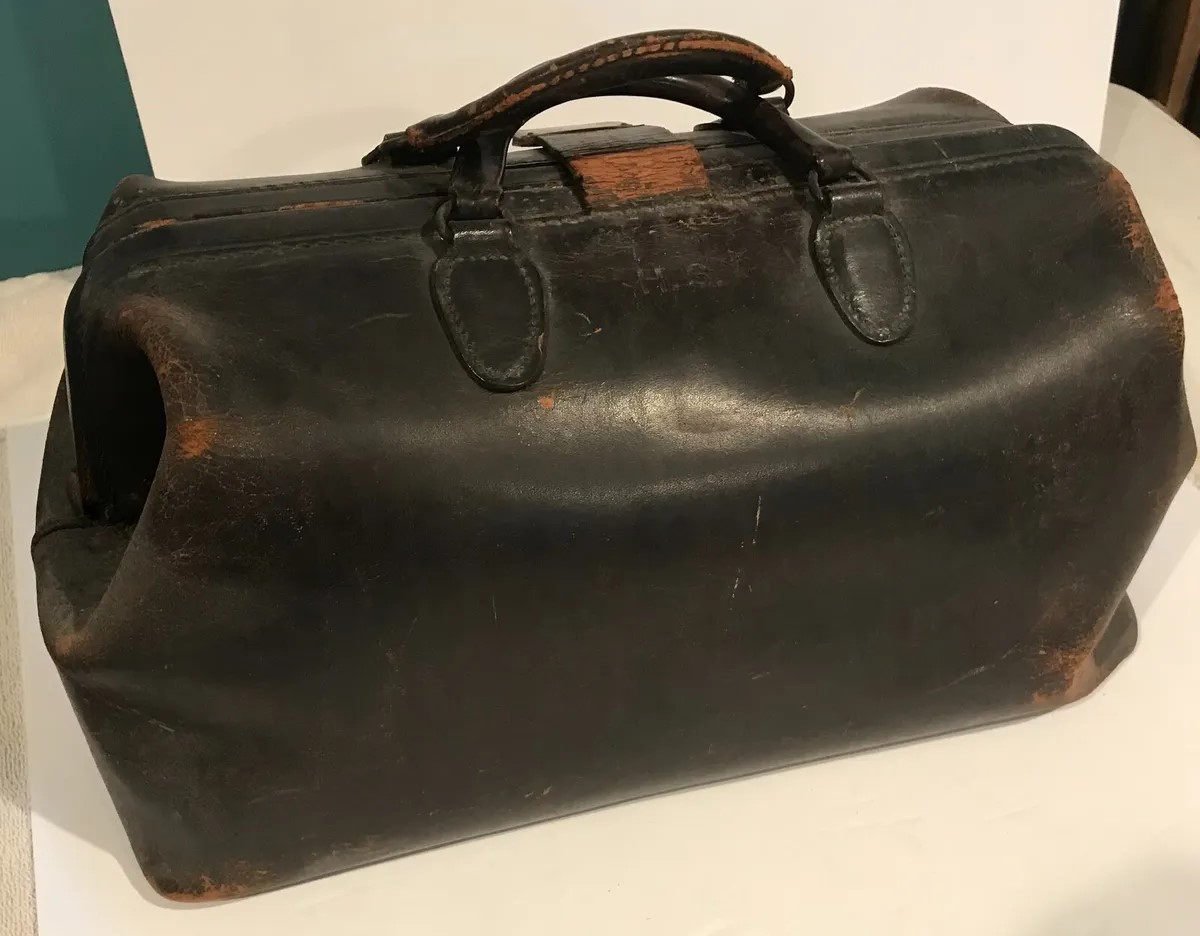 "So they got this guy, and he arrived 'stinking of gin.' This guy was so drunk. 'Hello Paul. How are you?' 'Great.' 'Oh yes, that's going to need stitches. I've brought my bag.' So he brings his black bag and now he's got to try and thread a little needle, a curved surgical needle, but he's seeing three needles at least. I think I said, 'Let us do it.' And we threaded it for him. I said, 'You're just going to do this with no anaesthetic?' He said, 'Well, I haven't got any.' I think I might have had a slug of scotch or something. He just put the needle in and pulled it round. And then the thread came out and he said, 'Oh, I'm sorry, I have to do that again.' So he had to do it a second bloody time, and I was trying not to scream. To be honest, he really didn't do a marvellous job, and I had this bump in my lip for a good while after. I can still feel it. And I was black and blue and really quite a mess. So I decided to grow a moustache. Then the other Beatles saw it and liked it, so they all grew moustaches too...That's where I think this 'stinking of gin' image came from - from this little painful memory." "So they got this guy, and he arrived 'stinking of gin.' This guy was so drunk. 'Hello Paul. How are you?' 'Great.' 'Oh yes, that's going to need stitches. I've brought my bag.' So he brings his black bag and now he's got to try and thread a little needle, a curved surgical needle, but he's seeing three needles at least. I think I said, 'Let us do it.' And we threaded it for him. I said, 'You're just going to do this with no anaesthetic?' He said, 'Well, I haven't got any.' I think I might have had a slug of scotch or something. He just put the needle in and pulled it round. And then the thread came out and he said, 'Oh, I'm sorry, I have to do that again.' So he had to do it a second bloody time, and I was trying not to scream. To be honest, he really didn't do a marvellous job, and I had this bump in my lip for a good while after. I can still feel it. And I was black and blue and really quite a mess. So I decided to grow a moustache. Then the other Beatles saw it and liked it, so they all grew moustaches too...That's where I think this 'stinking of gin' image came from - from this little painful memory."
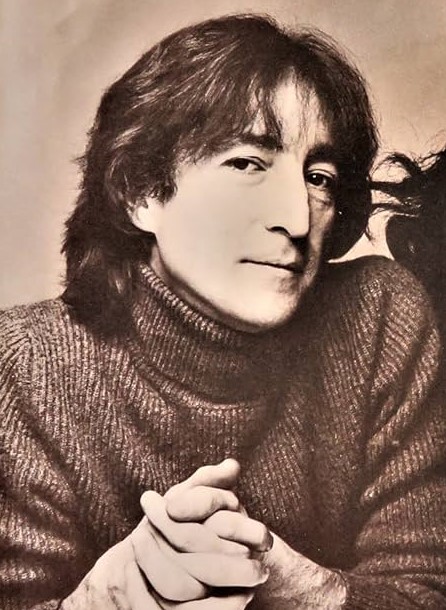 As to Donovan's involvement in writing the song, nothing has been verified. As for John, when asked in 1980 who wrote the song, he exclaimed: “Paul, can't you tell? Would I go through all that trouble about Gideon's Bible and that sort of thing? He maybe got stuck on a couple of lines that I helped on, but mainly it's him.” As to Donovan's involvement in writing the song, nothing has been verified. As for John, when asked in 1980 who wrote the song, he exclaimed: “Paul, can't you tell? Would I go through all that trouble about Gideon's Bible and that sort of thing? He maybe got stuck on a couple of lines that I helped on, but mainly it's him.”
Recording History
On May 29th, 1968, The Beatles recorded a demo version of "Rocky Raccoon" at George's 'Kinfauns' home in Esher, Surrey on an Ampex four-track machine. The group had met on this and the previous day to record demos of songs they were to bring to EMI Studios in the upcoming months for inclusion on their next album.
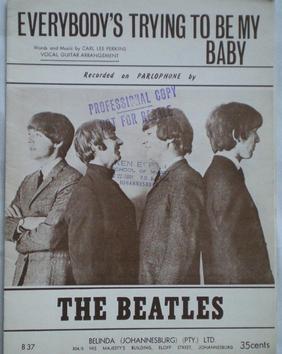 The demo recorded on this day was very similar to what was to become the released version with the exception being the exclusion of the spoken-word introduction and the “doctor” section of the second verse, these not being formalized until he got into the studio two-and-a-half months later. This demo consisted of Paul double-tracking himself on acoustic guitar and vocals, George adding country-like acoustic guitar fills in between lyric phrases, and sporadic maracas that were probably played by Ringo. The song concludes with a tricky surprise ending by George and Paul not unlike what they recorded for “Everybody's Trying To Be My Baby” back in 1964. The demo recorded on this day was very similar to what was to become the released version with the exception being the exclusion of the spoken-word introduction and the “doctor” section of the second verse, these not being formalized until he got into the studio two-and-a-half months later. This demo consisted of Paul double-tracking himself on acoustic guitar and vocals, George adding country-like acoustic guitar fills in between lyric phrases, and sporadic maracas that were probably played by Ringo. The song concludes with a tricky surprise ending by George and Paul not unlike what they recorded for “Everybody's Trying To Be My Baby” back in 1964.
 The “White Album” was a little over half finished by the time Paul brought “Rocky Raccoon” into EMI Studio Two on August 15th, 1968. The group arrived sometime after the documented 7 pm on this day and began rehearsing the song. Although George had contributed some suitable country guitar licks on the 'Kinfauns' demo outlined above, he sat out on the official recording of the basic track on this day, opting to occupy himself in the control room instead, evidenced by him announcing “take one” at the start of the recording process, as well as inquiring "Paul, which verse does the piano come in on?" The “White Album” was a little over half finished by the time Paul brought “Rocky Raccoon” into EMI Studio Two on August 15th, 1968. The group arrived sometime after the documented 7 pm on this day and began rehearsing the song. Although George had contributed some suitable country guitar licks on the 'Kinfauns' demo outlined above, he sat out on the official recording of the basic track on this day, opting to occupy himself in the control room instead, evidenced by him announcing “take one” at the start of the recording process, as well as inquiring "Paul, which verse does the piano come in on?"
 George asked this question because George Martin was on the studio floor with The Beatles at this point, playing piano on the early takes of the song. The instrumentation recorded on this four-track tape began as John on Fender VI bass and periodic harmonica doodling on track one, Ringo on drums on track two, Paul on acoustic guitar and George Martin on piano on track three, and Paul's lead vocals on track four. "It was a difficult song to record,” Paul relates, “because it had to be all in one take. It would have been very hard to edit because of the quirkiness of the vocal, so I had to do a couple of takes until I got the right sort of feel. But it was fun to do.” George asked this question because George Martin was on the studio floor with The Beatles at this point, playing piano on the early takes of the song. The instrumentation recorded on this four-track tape began as John on Fender VI bass and periodic harmonica doodling on track one, Ringo on drums on track two, Paul on acoustic guitar and George Martin on piano on track three, and Paul's lead vocals on track four. "It was a difficult song to record,” Paul relates, “because it had to be all in one take. It would have been very hard to edit because of the quirkiness of the vocal, so I had to do a couple of takes until I got the right sort of feel. But it was fun to do.”
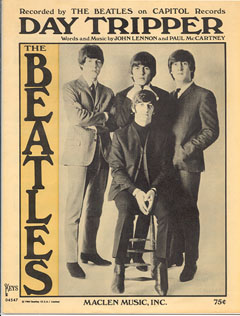 It actually took nine takes for Paul to get the right feel, as well as to ad lib a suitable spoken introduction and formulate the “doctor” section of the second verse. During the unfinished "doctor" verse in "take four," Paul sang that he "rolled up his sleeves," which prompted Rocky to say, "move over, Doc, let's have none of your cock." Shortly after this statement, this take ended with Paul admitting, "F*ck knows where I am!" before resorting to playing the "Day Tripper" riff on his acoustic guitar. After bumbling through the "doctor" verse in "take five," Paul states, "I don't quite know the words to that verse yet," while another take begins with Paul's adlib, "Here is the story of a young man living in Minnesota...F*ck off!" Other "doctor" verse adlibs included: "roll up his sleeves on the sideboard," and "roll over, Rock...he said, 'ooh, it's OK doc. It's just a scratch and I'll be OK when I get home." So was the atmosphere of this recording session. It actually took nine takes for Paul to get the right feel, as well as to ad lib a suitable spoken introduction and formulate the “doctor” section of the second verse. During the unfinished "doctor" verse in "take four," Paul sang that he "rolled up his sleeves," which prompted Rocky to say, "move over, Doc, let's have none of your cock." Shortly after this statement, this take ended with Paul admitting, "F*ck knows where I am!" before resorting to playing the "Day Tripper" riff on his acoustic guitar. After bumbling through the "doctor" verse in "take five," Paul states, "I don't quite know the words to that verse yet," while another take begins with Paul's adlib, "Here is the story of a young man living in Minnesota...F*ck off!" Other "doctor" verse adlibs included: "roll up his sleeves on the sideboard," and "roll over, Rock...he said, 'ooh, it's OK doc. It's just a scratch and I'll be OK when I get home." So was the atmosphere of this recording session.
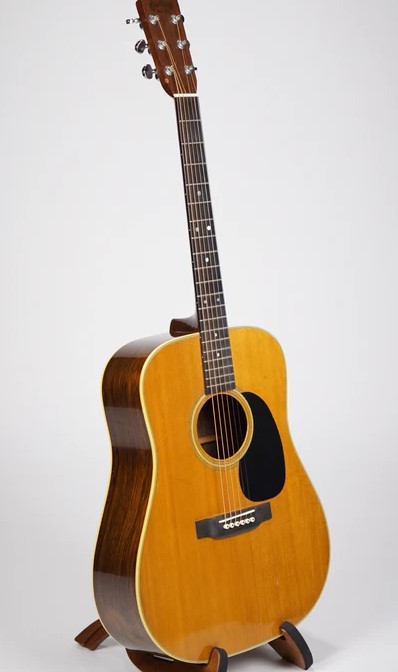 After "take five," it was decided that the piano parts would be overdubbed at a later time, which left Paul's Martin D-28 acoustic guitar alone on track three while George Martin resumed his position in the control room alongside George Harrison for the remainder of the session. "Take eight," which was eventually released on the compilation album “Anthology 3” as well as the Super Deluxe 50th Anniversary box set of the "White Album," featured the following introduction: Before this take began, John suggested the phrase “He was a fool unto himself.” Paul then begins the song with, “Rocky Raccoon...Rocky Raccoon, he was a fool unto himself. And he would not swallow his foolish pride. Mind you, coming from a little town in Minnesota, it was not the kind of thing that a young guy did when a fella went and stole his chick away from him.” After "take five," it was decided that the piano parts would be overdubbed at a later time, which left Paul's Martin D-28 acoustic guitar alone on track three while George Martin resumed his position in the control room alongside George Harrison for the remainder of the session. "Take eight," which was eventually released on the compilation album “Anthology 3” as well as the Super Deluxe 50th Anniversary box set of the "White Album," featured the following introduction: Before this take began, John suggested the phrase “He was a fool unto himself.” Paul then begins the song with, “Rocky Raccoon...Rocky Raccoon, he was a fool unto himself. And he would not swallow his foolish pride. Mind you, coming from a little town in Minnesota, it was not the kind of thing that a young guy did when a fella went and stole his chick away from him.”
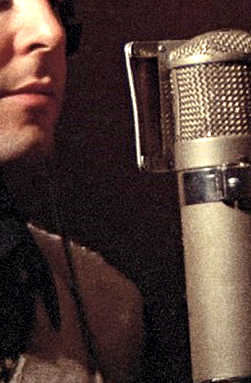 The "doctor" verse of "take eight" turned out to be: “The doctor walked in shminking of gin...shminking?...and proceeded to lie on the table...he was really shminking of gin, and it did him in in the end...poor doc...meantime back on the table, yeah, the doctor said, 'Rock, you met your match, son.' Rocky said, 'It's only a scratch, son, I'll be better soon.' 'You better be better soon,' said the doc, 'Come on son, gotta get hip, gotta get up, gotta get back to your gun, gotta go shoot that Danny boy'...However..." The "doctor" verse of "take eight" turned out to be: “The doctor walked in shminking of gin...shminking?...and proceeded to lie on the table...he was really shminking of gin, and it did him in in the end...poor doc...meantime back on the table, yeah, the doctor said, 'Rock, you met your match, son.' Rocky said, 'It's only a scratch, son, I'll be better soon.' 'You better be better soon,' said the doc, 'Come on son, gotta get hip, gotta get up, gotta get back to your gun, gotta go shoot that Danny boy'...However..."
 Right after this take was complete, Paul knew it wasn't acceptable and immediately began another take which is heard on the 50th Anniversary "White Album" box set. His introduction was, "Now Rocky Raccoon got up from his room and he walked out those swing doors of the local saloon, straight into the arms of someone new, someone who he'd known from a long way back, maybe from a primary school day. A young friend of Rocky recognized. She said, 'Honey, will you be my new honey bunch?' She said, 'Rocky boy, come on. I'll show you why I love you. Young Rock Raccoon, I love the way you wear your hat, I love the way you hit your pants. Rocky Raccoon, I dig you.' He said, 'Mrs, I dig you too. Come with me.'" It was apparent that, since this long-winded introduction was going deeper into the story than intended, this wasn't going to work. Paul, then, shut down this take right away. Right after this take was complete, Paul knew it wasn't acceptable and immediately began another take which is heard on the 50th Anniversary "White Album" box set. His introduction was, "Now Rocky Raccoon got up from his room and he walked out those swing doors of the local saloon, straight into the arms of someone new, someone who he'd known from a long way back, maybe from a primary school day. A young friend of Rocky recognized. She said, 'Honey, will you be my new honey bunch?' She said, 'Rocky boy, come on. I'll show you why I love you. Young Rock Raccoon, I love the way you wear your hat, I love the way you hit your pants. Rocky Raccoon, I dig you.' He said, 'Mrs, I dig you too. Come with me.'" It was apparent that, since this long-winded introduction was going deeper into the story than intended, this wasn't going to work. Paul, then, shut down this take right away.
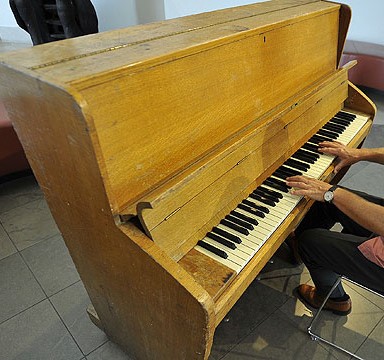 The very next take, "take nine" was the keeper. Since the four-track tape was filled, a tape reduction was made to free up more tracks for overdubbing, the result being called “take 10." A variety of overdubs were placed onto track three, including John on harmonica throughout most of the first verse and an accordian in the first half of the second verse. John, Paul and George added background vocals, while George Martin overdubbed a "tack piano" that was, according to Kevin Howlett's linear notes in the 50th Anniversary "White Album" box set, "recorded at half-speed to create a Western movie honky-tonk effect when played back at normal speed." This completed the recording of “Rocky Raccoon.” The very next take, "take nine" was the keeper. Since the four-track tape was filled, a tape reduction was made to free up more tracks for overdubbing, the result being called “take 10." A variety of overdubs were placed onto track three, including John on harmonica throughout most of the first verse and an accordian in the first half of the second verse. John, Paul and George added background vocals, while George Martin overdubbed a "tack piano" that was, according to Kevin Howlett's linear notes in the 50th Anniversary "White Album" box set, "recorded at half-speed to create a Western movie honky-tonk effect when played back at normal speed." This completed the recording of “Rocky Raccoon.”
 The session was not over though. George Martin and engineers Ken Scott and John Smith created the mono mix immediately after the song was recorded, this mix being the one issued on the mono version of the “White Album.” Only one try was needed to get it right, the announcement on tape of “RM1” being kept for posterity and added to one of the three ad lib tapes that were created for The Beatles. Tape copies of this mix, as well as the previously recorded “Yer Blues,” were made for John and Paul to take home. The session then came to a close at 3 am the following morning. The session was not over though. George Martin and engineers Ken Scott and John Smith created the mono mix immediately after the song was recorded, this mix being the one issued on the mono version of the “White Album.” Only one try was needed to get it right, the announcement on tape of “RM1” being kept for posterity and added to one of the three ad lib tapes that were created for The Beatles. Tape copies of this mix, as well as the previously recorded “Yer Blues,” were made for John and Paul to take home. The session then came to a close at 3 am the following morning.
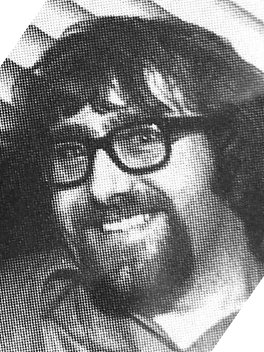 A further tape copy of the mono mix of “Rocky Raccoon” was made on August 23rd, 1968, along with four other previously recorded “White Album” tracks, all of which were taken away by assistant Mal Evans. A further tape copy of the mono mix of “Rocky Raccoon” was made on August 23rd, 1968, along with four other previously recorded “White Album” tracks, all of which were taken away by assistant Mal Evans.
The stereo mix of the song was created on October 10th, 1968 by the same team of George Martin, Ken Scott and John Smith in the control room of EMI Studio Two, only one attempt being needed for this also.
George Martin and engineer Geoff Emerick returned to the master tapes of “Rocky Raccoon” sometime in 1996 to create a mix of "take eight" for inclusion on the album “Anthology 3,” thus giving an interesting birds-eye view of the jovial nature of the recording session of August 15th, 1968.
 George Martin's son Giles Martin, along with engineer, Ken Okell, revisited the master tapes to create a vibrant new stereo mix of the song for inclusion on the various releases of the "White Album" for its 50th Anniversary. Along with it, they created a stereo mix of the Esher demo The Beatles made of "Rocky Raccoon" in May of 1968, as well as "take eight" from the original EMI master tape, complete with the aborted introduction that came immediately afterward. George Martin's son Giles Martin, along with engineer, Ken Okell, revisited the master tapes to create a vibrant new stereo mix of the song for inclusion on the various releases of the "White Album" for its 50th Anniversary. Along with it, they created a stereo mix of the Esher demo The Beatles made of "Rocky Raccoon" in May of 1968, as well as "take eight" from the original EMI master tape, complete with the aborted introduction that came immediately afterward.
Song Structure and Style
On the surface, the structure for "Rocky Raccoon" is very simple, namely 'verse/ refrain/ verse/ refrain' (or abab) with a spoken word introduction thrown in at the beginning. It's unique in that the entire song follows a simple chord pattern repeated over and over again throughout, while each of the verses are constructed of a wandering and indeterminate length. The purpose of the verses is to tell a story, not to fit within the bounds of a predetermined set of measures. If it were a longer story, it would have had longer verses. If it had been a shorter story, it would have had shorter verses. In fact, earlier takes of the song had different lengths of second verses since Paul hadn't quite decided on the exact story yet.
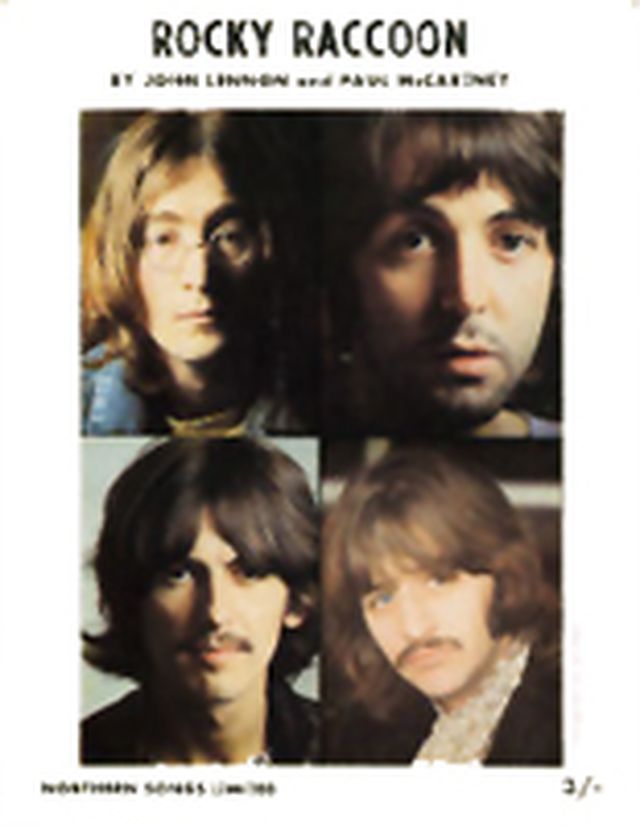 In any event, a ten measure introduction is heard first, which consists of two measures of the first chord to get the ball rolling and then two repeats of the four-chord pattern with Paul's spoken word explanation of who Rocky is, where he came from, and then setting the stage for the drama that was to unfold. Rocky's “woman ran off with another guy” and, adding insult to injury, this guy “hit young Rocky in the eye,” leaving him determined to seek revenge and get his girl back. He therefore “books himself a room in the local saloon” where he knows they will be found. The only instrumentation in this introduction is Paul on acoustic guitar and, briefly in the tenth measure, John blowing a few notes on harmonica. In any event, a ten measure introduction is heard first, which consists of two measures of the first chord to get the ball rolling and then two repeats of the four-chord pattern with Paul's spoken word explanation of who Rocky is, where he came from, and then setting the stage for the drama that was to unfold. Rocky's “woman ran off with another guy” and, adding insult to injury, this guy “hit young Rocky in the eye,” leaving him determined to seek revenge and get his girl back. He therefore “books himself a room in the local saloon” where he knows they will be found. The only instrumentation in this introduction is Paul on acoustic guitar and, briefly in the tenth measure, John blowing a few notes on harmonica.
.jpg) Then comes the first verse, which is a whopping 28 measures long, since he has quite a detailed story to tell. The only thing to occupy Rocky in the room he's rented is “Gideon's Bible,” since television hasn't been invented yet. He's not interested in that, though, especially the part about “Thou shall not kill.” He just sits there with the gun he brought contemplating how he's going to “shoot off the legs of his rival.” We are then introduced to his former “girl of his fancy,” who is actually known by three different names: “McGill,” “Lil” and “Nancy.” She and her new beau “Dan” were next door at the “hoedown” when Rocky broke in and pulled out his gun. But Dan was the first to fire his weapon which resulted in Rocky on the ground “in the corner.” Then comes the first verse, which is a whopping 28 measures long, since he has quite a detailed story to tell. The only thing to occupy Rocky in the room he's rented is “Gideon's Bible,” since television hasn't been invented yet. He's not interested in that, though, especially the part about “Thou shall not kill.” He just sits there with the gun he brought contemplating how he's going to “shoot off the legs of his rival.” We are then introduced to his former “girl of his fancy,” who is actually known by three different names: “McGill,” “Lil” and “Nancy.” She and her new beau “Dan” were next door at the “hoedown” when Rocky broke in and pulled out his gun. But Dan was the first to fire his weapon which resulted in Rocky on the ground “in the corner.”
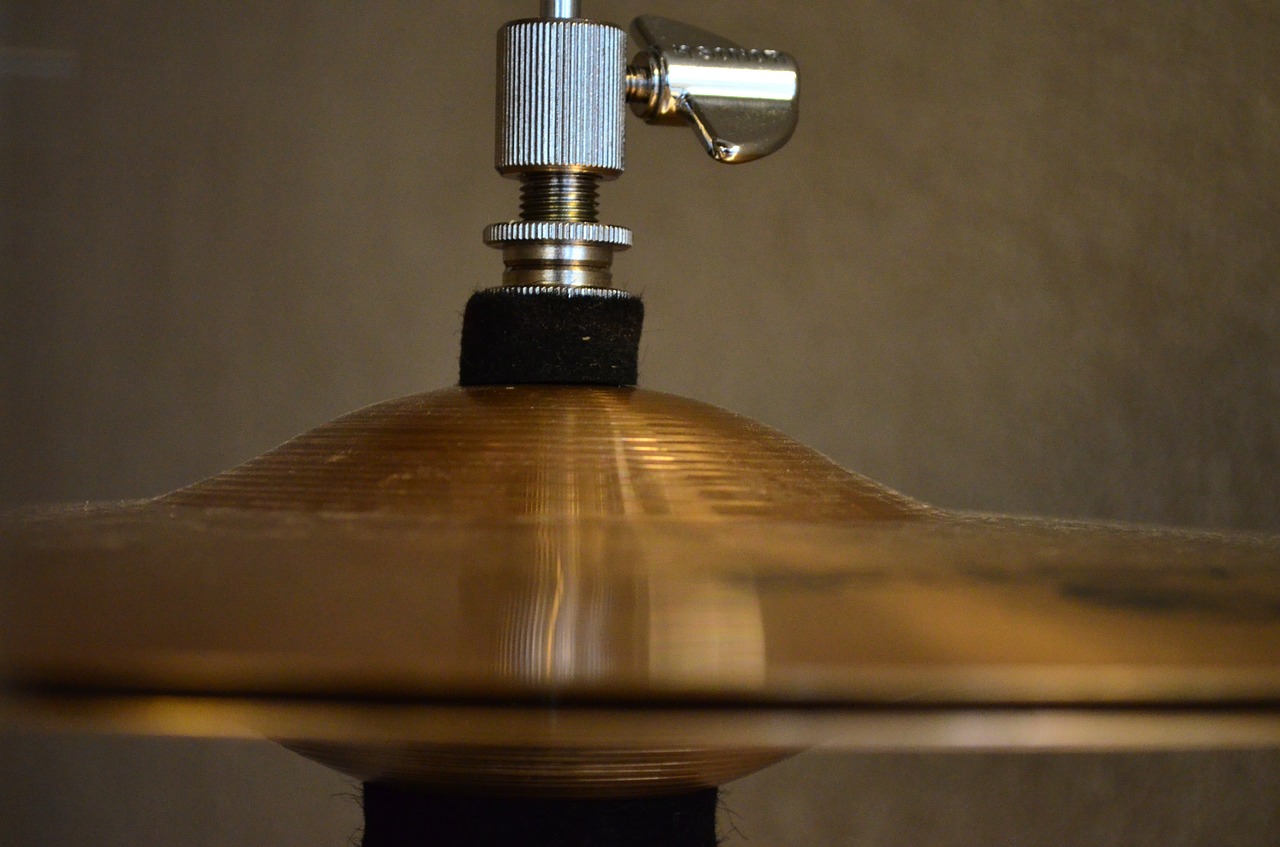 Instrumentally, this long verse includes, other than Paul's continuing rhythm guitar and vocals, Ringo with a simple hi-hat beat that starts in the fourth measure, and John's bass guitar work that starts in the ninth measure, while John's overdubbed harmonica starts in the 20th measure signaled by the word “hoedown.” Ringo begins alternating his hi-hat beat with bass drum starting with the 13th measure and then accentuates the gunshot in the 26th measure with a snare drum flam. Instrumentally, this long verse includes, other than Paul's continuing rhythm guitar and vocals, Ringo with a simple hi-hat beat that starts in the fourth measure, and John's bass guitar work that starts in the ninth measure, while John's overdubbed harmonica starts in the 20th measure signaled by the word “hoedown.” Ringo begins alternating his hi-hat beat with bass drum starting with the 13th measure and then accentuates the gunshot in the 26th measure with a snare drum flam.
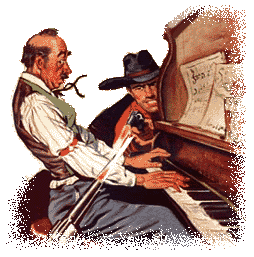 An eight measure refrain then occurs with Ringo taking the song into double-time with his drum playing and George Martin dangerously sitting in on the saloon piano while bullets are flying. John apparently ducks for cover with his harmonica but Paul bravely sings a “da, da, da...doo, doo, doo” rendition of what the piano player is playing. An eight measure refrain then occurs with Ringo taking the song into double-time with his drum playing and George Martin dangerously sitting in on the saloon piano while bullets are flying. John apparently ducks for cover with his harmonica but Paul bravely sings a “da, da, da...doo, doo, doo” rendition of what the piano player is playing.
 After a brief drum break from Ringo at the end of the eighth measure, he drops the tempo back as before so Paul can narrate the rest of the story in the second verse, which is sixteen measures long. George Martin even stops playing to witness what happens next, while John drops his harmonica and jumps on a nearby accordian for the first eight measures. After a brief drum break from Ringo at the end of the eighth measure, he drops the tempo back as before so Paul can narrate the rest of the story in the second verse, which is sixteen measures long. George Martin even stops playing to witness what happens next, while John drops his harmonica and jumps on a nearby accordian for the first eight measures.
.jpg) “The doctor” arrives for a house call but, given the urgent request for his immediate presence, he was drunk from drinking gin. So drunk, in fact, that he “proceeded to lie on the table,” apparently not being much help at all. Rocky consoles the doctor and himself by minimizing the injury, saying “it's only a scratch and I'll be better.” This happy news even gives Ringo an excited burst of energy, evidenced by a jovial drum break in celebration. Humiliated, Rocky “fell back in his room” and figures that this guy named “Gideon,” in a great synchronicity, accidentally left his Bible in the room to initiate the young Rocky's “revival” from his injury and/or broken heart. Somehow, our hero will carry on, thanks to the healing power of God's word! A chorus of three men harmonize in the twelfth through sixteenth measures as an indication of Rocky's saved soul. “The doctor” arrives for a house call but, given the urgent request for his immediate presence, he was drunk from drinking gin. So drunk, in fact, that he “proceeded to lie on the table,” apparently not being much help at all. Rocky consoles the doctor and himself by minimizing the injury, saying “it's only a scratch and I'll be better.” This happy news even gives Ringo an excited burst of energy, evidenced by a jovial drum break in celebration. Humiliated, Rocky “fell back in his room” and figures that this guy named “Gideon,” in a great synchronicity, accidentally left his Bible in the room to initiate the young Rocky's “revival” from his injury and/or broken heart. Somehow, our hero will carry on, thanks to the healing power of God's word! A chorus of three men harmonize in the twelfth through sixteenth measures as an indication of Rocky's saved soul.
 In jubilation, George Martin jumps back on the piano stool to reprise his role in the previous refrain along with the same instrumentation and vocalization as heard before. Paul repeatedly prods our hero on with encouraging words (“come on, Rocky boy!”) while John finds his dropped harmonica by the time the final measure of the song rings out. In jubilation, George Martin jumps back on the piano stool to reprise his role in the previous refrain along with the same instrumentation and vocalization as heard before. Paul repeatedly prods our hero on with encouraging words (“come on, Rocky boy!”) while John finds his dropped harmonica by the time the final measure of the song rings out.
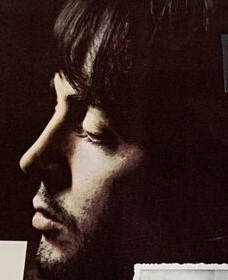 Paul's pet project appears to have been well received by all involved, everyone giving it their all (except for George, unfortunately, who pretty much sat out for the entire proceedings). This sort of thing was usually a little too hokey for John but, possibly because of Yoko's presence in the studio, he showed himself a team player and put in a spirited performance. Of course, George Martin, the prolific pianist, was up for the task and created the perfect saloon atmosphere. And three cheers to Ringo, as usual, for doing what he always did best. Paul's pet project appears to have been well received by all involved, everyone giving it their all (except for George, unfortunately, who pretty much sat out for the entire proceedings). This sort of thing was usually a little too hokey for John but, possibly because of Yoko's presence in the studio, he showed himself a team player and put in a spirited performance. Of course, George Martin, the prolific pianist, was up for the task and created the perfect saloon atmosphere. And three cheers to Ringo, as usual, for doing what he always did best.
American Releases
November 25th, 1968, was the American release date for the double-album "The Beatles," most commonly known as the "White Album." "Rocky Raccoon" was the third in the series of three songs with animals in their titles featured concurrently on side two of the album, the first two being "Blackbird" and "Piggies." The album first appeared on compact disc on August 24th, 1987, then as a 30th Anniversary limited edition release on November 23rd, 1998, and then as a remastered CD on September 9th, 2009. The mono version of the album on vinyl wasn't released in the US until November 9th, 2014, while a vibrant new stereo mix was released on vinyl on November 9th, 2018.
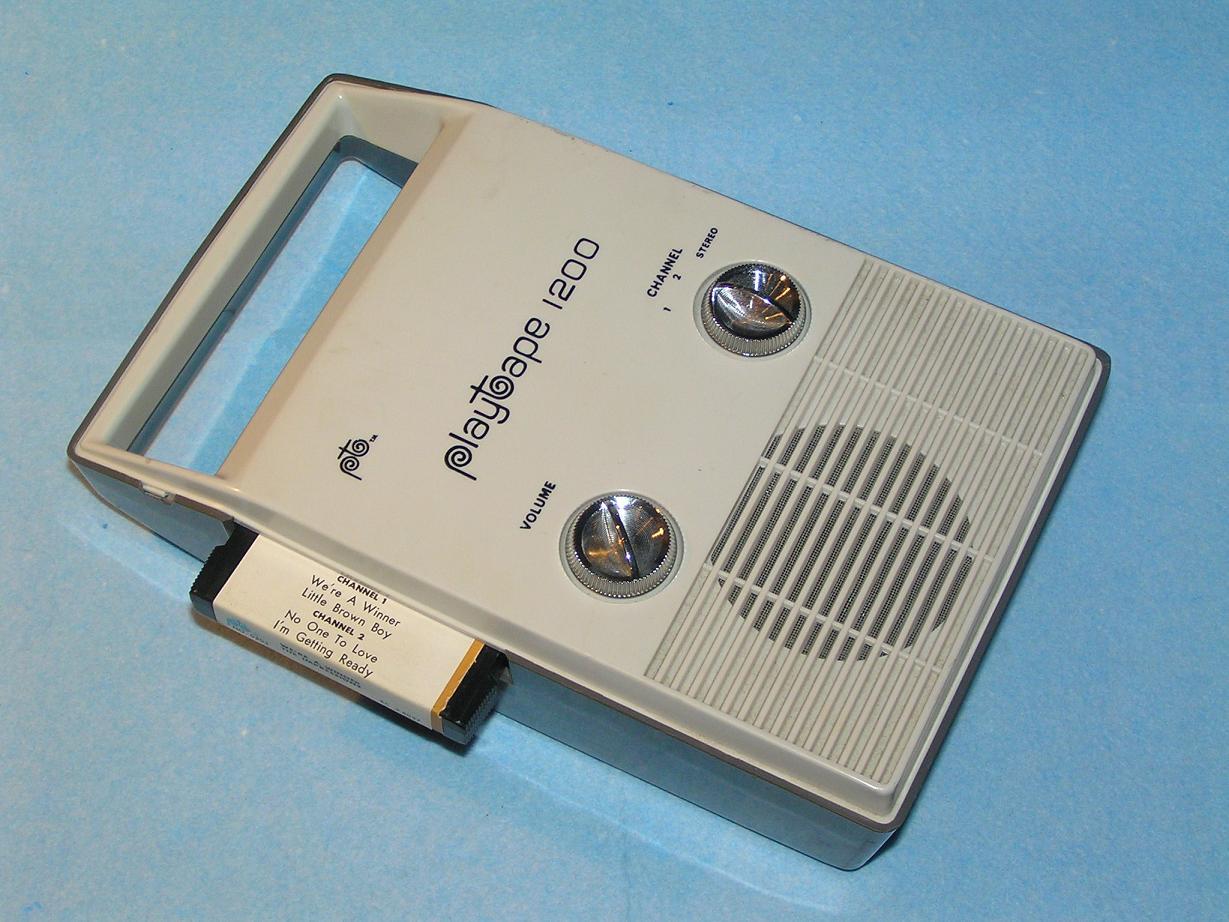 A short lived format called “Playtapes” was on the market in America in the late '60s, Capitol jumping on the bandwagon by releasing various Beatles “Playtapes” to be played on portable players and as standard equipment in some Volkswagen models at that time. Five volumes were released to make available the majority of tracks from the “White Album” in this format in 1969, “The Beatles Vol. II” including “Rocky Raccoon” along with four other songs. A short lived format called “Playtapes” was on the market in America in the late '60s, Capitol jumping on the bandwagon by releasing various Beatles “Playtapes” to be played on portable players and as standard equipment in some Volkswagen models at that time. Five volumes were released to make available the majority of tracks from the “White Album” in this format in 1969, “The Beatles Vol. II” including “Rocky Raccoon” along with four other songs.
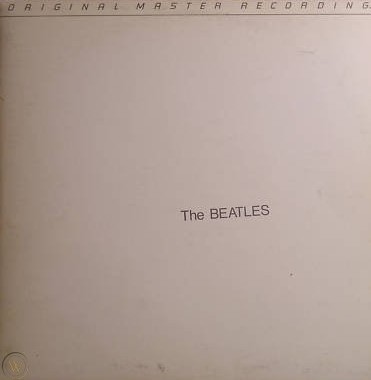 An interesting US vinyl edition of the “White Album” was released on January 7th, 1982, this being manufactured by Mobile Fidelity Sound Lab in Chatsworth, California as part of their "Original Master Recording" series. Their practice was to prepare a new master utilizing half-speed mastering technology from the original master tapes, in this case using the leased sub-master from Capitol Records. This release, which sounded superior to all previous British and American pressings, was packaged in a non-embossed unnumbered cover that did not include the usual poster/lyric sheet or individual Beatles portraits as contained in standard releases. This nonetheless excellent edition of the album was only available for a short time and is quite collectible today. An interesting US vinyl edition of the “White Album” was released on January 7th, 1982, this being manufactured by Mobile Fidelity Sound Lab in Chatsworth, California as part of their "Original Master Recording" series. Their practice was to prepare a new master utilizing half-speed mastering technology from the original master tapes, in this case using the leased sub-master from Capitol Records. This release, which sounded superior to all previous British and American pressings, was packaged in a non-embossed unnumbered cover that did not include the usual poster/lyric sheet or individual Beatles portraits as contained in standard releases. This nonetheless excellent edition of the album was only available for a short time and is quite collectible today.
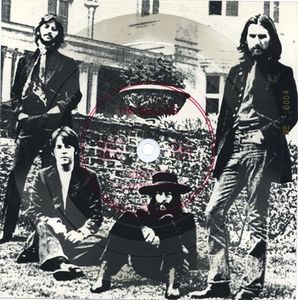 Sometime in 1982, a flexi-disc that featured “Rocky Raccoon” and “Why Don't We Do It In The Road?” was released as a promotional tool by Capitol / Evatone, these discs being given away at either “Musicland,” “Discount” or “Sam Goody” record stores whenever a Beatles album was purchased. This flexi-disc was printed on clear vinyl and adhered to the picture of The Beatles as found on the back cover of the “Hey Jude” album. Sometime in 1982, a flexi-disc that featured “Rocky Raccoon” and “Why Don't We Do It In The Road?” was released as a promotional tool by Capitol / Evatone, these discs being given away at either “Musicland,” “Discount” or “Sam Goody” record stores whenever a Beatles album was purchased. This flexi-disc was printed on clear vinyl and adhered to the picture of The Beatles as found on the back cover of the “Hey Jude” album.
On October 28th, 1996, the compilation album “Anthology 3” was released which featured "take eight" of the basic track of “Rocky Raccoon” as recorded on August 15th, 1968. Fans then got to hear the laid-back fun approach The Beatles took when recording the song.
 The entire mono Beatles catalog was released as a CD box set entitled “The Beatles In Mono” on September 9th, 2009, this set including the entire “White Album” in mono as released in Britain back in 1968. The vinyl edition of this box set was first released on September 9th, 2014. The entire mono Beatles catalog was released as a CD box set entitled “The Beatles In Mono” on September 9th, 2009, this set including the entire “White Album” in mono as released in Britain back in 1968. The vinyl edition of this box set was first released on September 9th, 2014.
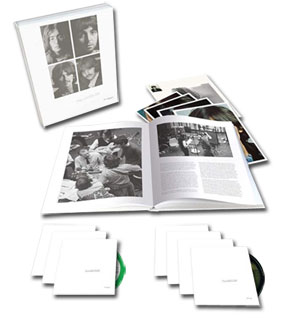 Various editions of the "White Album" were released on November 9th, 2018 to commemorate the 50th Anniversary of its original release. The "Deluxe" edition, which was made available in a 3CD set and a limited edition 180-gram 4LP vinyl set, contained the newly created Giles Martin mix of the "White Album" as well as the complete set of Esher demos that The Beatles recorded in late May of 1968. The "Super Deluxe" 6CD + 1Blu-ray edition also contains "take eight" as had "Anthology 3" before it, but they also let the master tape run a little longer to include Paul's humorous adlib introduction to what he intented as "take nine," but which broke down shortly afterward. Various editions of the "White Album" were released on November 9th, 2018 to commemorate the 50th Anniversary of its original release. The "Deluxe" edition, which was made available in a 3CD set and a limited edition 180-gram 4LP vinyl set, contained the newly created Giles Martin mix of the "White Album" as well as the complete set of Esher demos that The Beatles recorded in late May of 1968. The "Super Deluxe" 6CD + 1Blu-ray edition also contains "take eight" as had "Anthology 3" before it, but they also let the master tape run a little longer to include Paul's humorous adlib introduction to what he intented as "take nine," but which broke down shortly afterward.
Live Performances
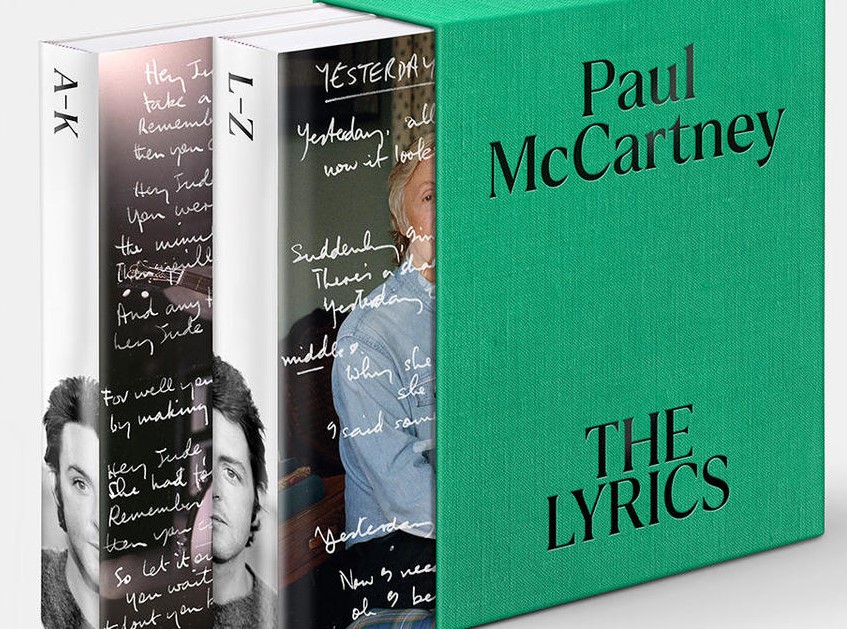 Neither The Beatles nor McCartney as a solo act have even performed “Rocky Raccoon” live. "I keep meaning to do this song in concert, since a lot of people request it," Paul stated in his 2021 book "The Lyrics." "Maybe I will one of these days." Neither The Beatles nor McCartney as a solo act have even performed “Rocky Raccoon” live. "I keep meaning to do this song in concert, since a lot of people request it," Paul stated in his 2021 book "The Lyrics." "Maybe I will one of these days."
Conclusion
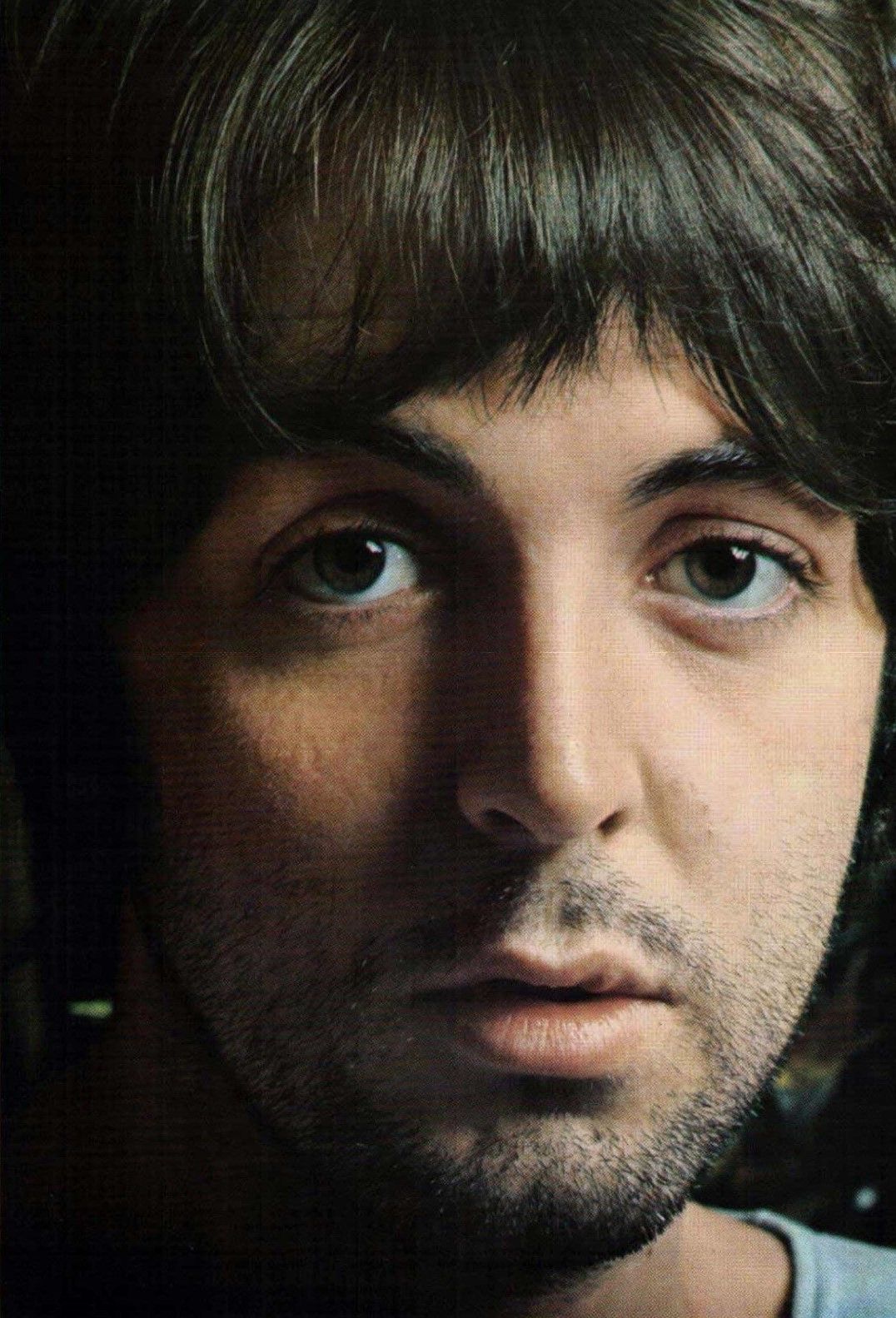 One thing that can be said about Paul McCartney as a composer is that he was always true to himself. He was a very diverse songwriter who delivered material in a variety of styles. The other Beatles may have rolled their eyes whenever he offered up something away from the format they thought the group should focus on, but this didn't deter Paul one bit. After the group split up, he of course had free reign to go in whatever direction he wanted to. But then again, he always did anyway. One thing that can be said about Paul McCartney as a composer is that he was always true to himself. He was a very diverse songwriter who delivered material in a variety of styles. The other Beatles may have rolled their eyes whenever he offered up something away from the format they thought the group should focus on, but this didn't deter Paul one bit. After the group split up, he of course had free reign to go in whatever direction he wanted to. But then again, he always did anyway.
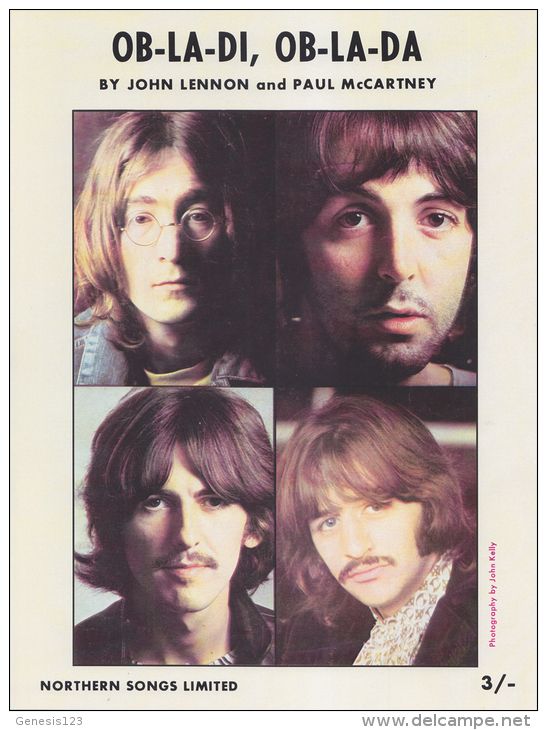 He may have been most prominently known for his ballads, but his rockers could be blisteringly heavy. He prided himself on tackling any genre of music he set his mind to. One only has to examine the McCartney compositions on the “White Album” as proof. From parody rock (“Back In The U.S.S.R.”) to Jamaican (“Ob-La-Di, Ob-La-Da”) to tender love ballad (“I Will”) to experimental (“Wild Honey Pie”) to nostalgic pastiche (“Honey Pie”). And if he wants to write a cowboy song, dagnabbit, he will! He may have been most prominently known for his ballads, but his rockers could be blisteringly heavy. He prided himself on tackling any genre of music he set his mind to. One only has to examine the McCartney compositions on the “White Album” as proof. From parody rock (“Back In The U.S.S.R.”) to Jamaican (“Ob-La-Di, Ob-La-Da”) to tender love ballad (“I Will”) to experimental (“Wild Honey Pie”) to nostalgic pastiche (“Honey Pie”). And if he wants to write a cowboy song, dagnabbit, he will!
Song Summary
“Rocky Raccoon”
Written by: John Lennon / Paul McCartney
- Song Written: March to August 15, 1968
- Song Recorded: August 15, 1968
- First US Release Date: November 25, 1968
- First US Album Release: Apple #SWBO-101 “The Beatles”
- US Single Release: Capitol/Evatone #420828cs
- Highest Chart Position: n/a
- British Album Release: Apple #PCS 7067-7068 “The Beatles”
- Length: 3:33
- Key: C major
- Producer: George Martin
- Engineers: Ken Scott, John Smith
Instrumentation (most likely):
- Paul McCartney - Lead and Backing Vocals, Acoustic Guitar (1967 Martin D-28)
- John Lennon - Bass Guitar (1961 Fender Bass VI), Harmonica (Hohner chromatic), accordian, backing vocals
- Ringo Starr - Drums (1964 Ludwig Super Classic Black Oyster Pearl)
- George Harrison - Backing vocals
- George Martin - Piano (1964 Challen “Jangle Box” upright 861834)
Written and compiled by Dave Rybaczewski
|
IF YOU WOULD LIKE TO MAKE A DONATION TO KEEP THIS WEBSITE UP AND RUNNING, PLEASE CLICK BELOW!
Sign Up Below for our MONTHLY BEATLES TRIVIA QUIZ!
|